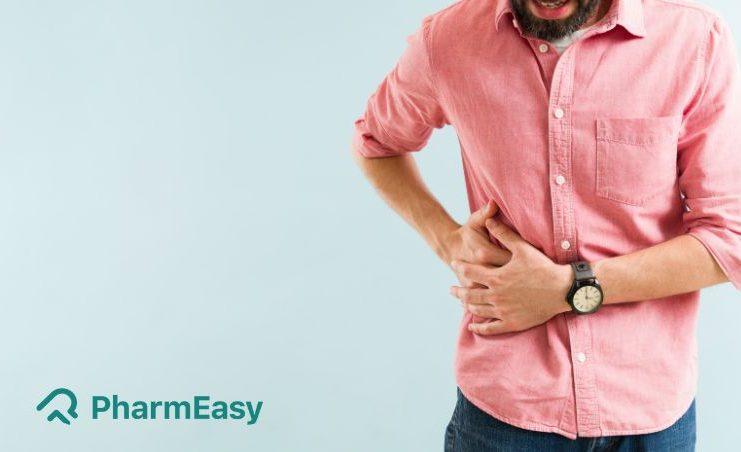Cholelithiasis: Symptoms, Causes & Treatment
By Dr. Mayuri Pandey +2 more

Get,

to manage your symptom
Get your,


4 Cr+ families
benefitted

OTP sent to 9988776655



You’ve successfully subscribed to receive
doctor-approved tips on
Whatsapp

Get ready to feel your best.

Hi There,
Download the PharmEasy App now!!


Register to Avail the Offer
Send OTPBy continuing, you agree with our Privacy Policy and Terms and Conditions

Hi There,
Sign up on PharmEasy now!!
Trusted by 4 crore+ families

OTP sent to 9988776655



You have unlocked 25% off on medicines




Code: NU25
By Dr. Mayuri Pandey +2 more
Table of Contents
Picture this: small, pebble-like stones forming in your gallbladder. This is cholelithiasis, also known as gallstones – a medical condition that can cause discomfort and pain. These stones can vary in size, with some as small as a grain of sand and others as large as a golf ball. But no matter their size, the discomfort they can cause is anything but small. The gallbladder is a small organ in the body that stores bile, a fluid that contains different substances like cholesterol, bilirubin, bile salts, and lecithin. These stones are generally composed of cholesterol or bilirubin, which gradually collect in the gallbladder until they harden into stones. This can create a blockage and cause a range of uncomfortable symptoms. Continue reading to know more about it.1
In some cases, cholelithiasis or gallstones may not cause any noticeable symptoms. However, at other times, they can cause the following symptoms: 2-4

If you notice any of these symptoms, you should contact your doctor right away.
Gallstones are caused by excess bilirubin and cholesterol in the bile fluid. According to their cause, gallstones are divided into two types: 1
Several risk factors increase the likelihood of developing gallstones. These include:4
It’s always best to consult with a healthcare provider if you’re experiencing symptoms or have concerns about your risk of developing gallstones.
Gallstones can cause serious health problems. Here are some of the complications: 1,4
Read More: Home Remedies For Gall Bladder Stone
Read More: Can You Exercise With Gall Bladder Stone
Gallstones can be treated in various ways depending on the size of the stone and your physical condition. Your doctor is the best person to guide you on which mode of treatment is suitable for you. Here are some options for treating gallstones: 1-4
Some gallstones can be treated with medicines that help dissolve the stones. However, it may take months or years of medication to completely dissolve the stone. This option is not common and is only suggested to people who cannot undergo surgery for some reason.
Women are more likely to develop gallstones due to the hormone oestrogen, which increases cholesterol levels and slows down gallbladder contractions. High levels of oestrogen during menstruation and pregnancy increase the likelihood of developing gallstones. 1,2
Gallstone surgery is generally safe, with rare complications during the surgery. Post-surgery, abdominal pain or gas may occur. 1
Yes, you can live without a gallbladder and it will not affect your digestion. Bile flows directly from your liver into your small intestine after the gallbladder is removed. 1
While gallstones cannot be prevented, the risk can be lowered by increasing fibre intake and decreasing cholesterol in your diet. 2
After gallstone surgery, it may take a few weeks for your digestive system to recover. You can then resume a normal balanced diet with less fat. 1
Disclaimer: The information provided here is for educational/awareness purposes only and is not intended to be a substitute for medical treatment by a healthcare professional and should not be relied upon to diagnose or treat any medical condition. The reader should consult a registered medical practitioner to determine the appropriateness of the information and before consuming any medication. PharmEasy does not provide any guarantee or warranty (express or implied) regarding the accuracy, adequacy, completeness, legality, reliability or usefulness of the information; and disclaims any liability arising thereof.
Links and product recommendations in the information provided here are advertisements of third-party products available on the website. PharmEasy does not make any representation on the accuracy or suitability of such products/services. Advertisements do not influence the editorial decisions or content. The information in this blog is subject to change without notice. The authors and administrators reserve the right to modify, add, or remove content without notification. It is your responsibility to review this disclaimer regularly for any change

Leave your comment...
Comments